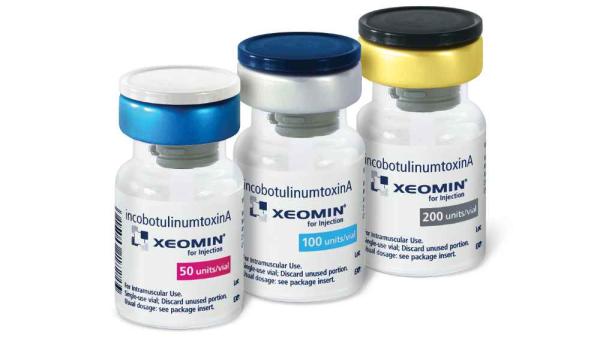IncobotulinumtoxinA Disease Interactions
There are 3 disease interactions with incobotulinumtoxinA.
Botulinum toxin products (applies to incobotulinumtoxinA) dysphagia/respiratory/neuromuscular disorders
Major Potential Hazard, Moderate plausibility. Applicable conditions: Pulmonary Impairment, Myasthenia Gravis
Treatment with botulinum toxin products, including abobotulinumtoxinA, incobotulinumtoxinA, onabotulinumtoxinA, daxibotulinumtoxinA, letibotulinumtoxinA and others can result in swallowing and breathing difficulties and in general increased neuromuscular compromise. Deaths due to severe dysphagia or respiratory failure have been reported after treatment with botulinum toxin. Care should be exercised with using these products in patients with pre- existing swallowing or respiratory disorders or peripheral motor neuropathic diseases or neuromuscular disorders (e.g., myasthenia gravis, amyotrophic lateral sclerosis), as they may be at increased risk of clinically significant effects including generalized muscle weakness, diplopia, ptosis, dysphonia, dysarthria, severe dysphagia and respiratory compromise. Patients treated with botulinum toxin may require immediate medical attention should they develop these complications. Caution is advised.
Botulinum toxin products (applies to incobotulinumtoxinA) infection
Major Potential Hazard, Moderate plausibility. Applicable conditions: Infection - Bacterial/Fungal/Protozoal/Viral
Botulinum toxin products, including abobotulinumtoxinA, incobotulinumtoxinA, onabotulinumtoxinA, letibotulinumtoxinA, and others should not be used in the presence of infection at the proposed injection site(s) as it could lead to severe local or disseminated infection(s).
IncobotulinumtoxinA (applies to incobotulinumtoxinA) narrow angle glaucoma
Moderate Potential Hazard, Moderate plausibility. Applicable conditions: Glaucoma (Narrow Angle)
Xeomin (brand of incobotulinumtoxinA), a botulinum toxin product for the treatment of blepharospasm should be used with caution in patients at risk of developing narrow angle glaucoma. The anticholinergic effects of botulinum toxin products can reduce blinking and lead to corneal exposure, persistent epithelial defect and corneal ulceration, especially in patients with VII nerve disorders. To prevent ectropion, it is recommended that botulinum toxin products should not be injected into the medial lower eyelid area.
Switch to professional interaction data
IncobotulinumtoxinA drug interactions
There are 120 drug interactions with incobotulinumtoxinA.
More about incobotulinumtoxinA
- incobotulinumtoxinA consumer information
- Check interactions
- Compare alternatives
- Reviews (5)
- Side effects
- Dosage information
- During pregnancy
- Drug class: skeletal muscle relaxants
- Breastfeeding
- En español
Related treatment guides
Drug Interaction Classification
| Highly clinically significant. Avoid combinations; the risk of the interaction outweighs the benefit. | |
| Moderately clinically significant. Usually avoid combinations; use it only under special circumstances. | |
| Minimally clinically significant. Minimize risk; assess risk and consider an alternative drug, take steps to circumvent the interaction risk and/or institute a monitoring plan. | |
| No interaction information available. |
See also:
Further information
Always consult your healthcare provider to ensure the information displayed on this page applies to your personal circumstances.


